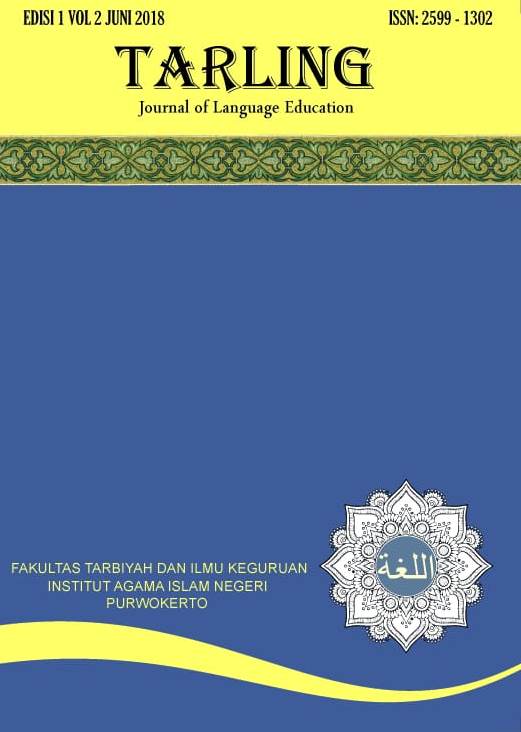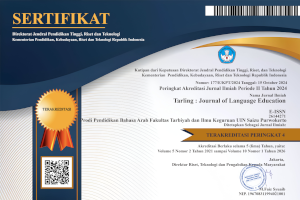Morphological Process of Wazan-Wazan Fi'il Mazid and Its Meaning in Al-Quran Chapter 28
DOI:
https://doi.org/10.24090/tarling.v3i2.3532Keywords:
Proses Morfologis, Wazan Fi’il Mazid, Al-Qur’an Juz 28Abstract
This study is aimed to describe (1) wazan-wazan fi'il mazid which are in Al-Quran chapter 28, (2) morphological process in fi'il mazid in Al-Quran chapter 28, (3) morpho-phonemic process in fi'il mazid in Al-Quran chapter 28, (4) the meanings which are contained in fi'il mazid in Al-Quran chapter 28. This study is a descriptive qualitative study. The data source is Al-Quran chapter 28. Data that are taken is put in the analysis table, then being reduced corresponding to the aim of this study. The result of this study shows that: (1) It is found that there are 154 words in Al-Quran chapter 28 with wazan fi'il mazid, (2) Words with wazan fi'il mazid in Al-Quran chapter 28 is occurring two morphological processes on its formation, they are affixation process (affixes addition) and internal modification (harakat transformation). (3) Morphophonemic process of fi'il mazid in Al-Quran chapter 28 is occurring three kinds of process, they are (a) idgham, (b) i'lal, (c) ibdal, and (4) The alteration of meanings in every wazan has their own use/function.Downloads
Published
2020-06-20
Issue
Section
Articles
License
Authors who publish with this journal agree to the following terms:
- Authors retain copyright and grant the journal right of first publication with the work simultaneously licensed under a Creative Commons Attribution License that allows others to share the work with an acknowledgement of the work's authorship and initial publication in this journal.
- Authors are able to enter into separate, additional contractual arrangements for the non-exclusive distribution of the journal's published version of the work (e.g., post it to an institutional repository or publish it in a book), with an acknowledgement of its initial publication in this journal.
- Authors are permitted and encouraged to post their work online (e.g., in institutional repositories or on their website) prior to and during the submission process, as it can lead to productive exchanges, as well as earlier and greater citation of published work (See The Effect of Open Access).










